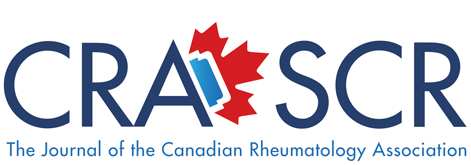Summer 2024 (Volume 34, Number 2)
Dunlop-Dottridge Lectureship:
The Impact of RA on First Nations People, and How We Can Work with Communities to Detect and Prevent It
By Hani El-Gabalawy, MD, FRCPC, FCAHS
Download PDF

It was truly an honour and a privilege for me to be selected to present the prestigious Dunlop-Dottridge Lecture at the 2024 Canadian Rheumatology Association Annual Scientific Meeting. This was made even more meaningful for me by having the meeting, for the first time, in my home city of Winnipeg. The title of the lecture was “What is the Impact of RA on First Nations People, and How We Can Work with Communities to Detect and Prevent it". In addition to the lecture itself, the presentation was complemented by a highly productive workshop focused on rheumatoid arthritis (RA) prevention. The following summary of the contents of the Dunlop-Dottridge lecture is from the abstract of the article on the lectureship, as published in the May 2024 issue of the Journal of Rheumatology.
Abstract
RA is prevalent in many Indigenous North American First Nations (FN) and tends to be seropositive, familial, and disabling, as well as associated with highly unfavourable outcomes such as early mortality. The risk of developing RA is based on a perfect storm of gene-environment interactions underpinning this risk. The gene-environment interactions include a high frequency of shared epitope encoding HLA alleles, particularly HLA-DRB1*1402, in the background population, and prevalent predisposing environmental factors such as smoking and periodontal disease. Together, these provide a compelling rationale for an RA prevention agenda in FN communities.
For the past twenty years, our research team has worked in partnership with several FN communities to prospectively follow the first-degree relatives of FN patients with RA, with the aim of better understanding the preclinical stages of RA in this population. We have focused on specific features of the anticitrullinated protein antibodies (ACPA) and other proteomic biomarkers as predictors of future development of RA. These studies have now led us to consider interventions having a favourable risk-benefit ratio if applied at a stage prior to a hypothetical “point of no return,” when the autoimmunity potentially becomes irreversible. Based on a supportive mouse model and available human studies of curcumin, omega-3, and vitamin D supplements, we are undertaking studies where we screen communities using dried blood spot technology adapted for the detection of ACPA, and then enrol ACPA-positive individuals in studies that use a combination of these supplements. These studies are guided by shared decision-making principles.
Hani El-Gabalawy, MD, FRCPC, FCAHS
Professor of Medicine and Immunology
University of Manitoba
Winnipeg, Manitoba
|
